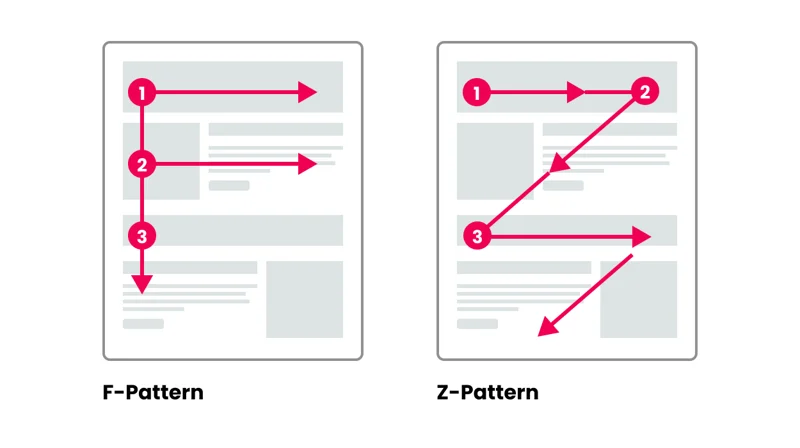Human eyes don’t move randomly across a webpage. Instead, they follow specific patterns influenced by how our brains process visual information. Understanding these viewing patterns can be a game-changer for creating effective and engaging web designs.

By aligning your most critical content and calls to action with these natural viewing patterns, you can guide users’ attention and ensure your message is seen and engaged with as intended. Visual cues like headings, images, and white-space can further direct the eye, while consistency in design makes navigation intuitive.
Leveraging these psychological principles rooted in eye movements and visual perception can elevate your website’s user experience, ultimately helping you achieve your goals more effectively.
Related Posts
Art, Tech, or Taste?
The design market, a battlefield once dominated by the solitary genius, fueled by caffeine and existential angst. Now, however, the air crackles with a new kind of tension. Entering AI, the ever-evolving, silicon-based Andy Warhol, churning out "innovative" chair concepts that resemble mutated Slinkys and lamp designs that look like they escaped a fever dream of a malfunctioning disco ball. And then the tech bros, bless their algorithmic hearts, assure us this is the future and praise, "AI-powered design...."
How Can AIDC Significantly Boost Your Marketing Performance?
Forget smoke and mirrors; modern marketing spells rely on a different kind of sorcery – Automatic Identification and Data Capture (AIDC). It's the secret sauce turning everyday interactions into personalized experiences.
Are You a Chimp with Data or a Human with AI?
In the digital marketing landscape, the distinction between being "smart" and "knowledgeable" is crucial. Much like the nuanced genetic difference between chimpanzees and humans, where a slight variation led to humans' advanced development, knowledge in marketing refers to data and information, while being smart involves strategic application of that knowledge.



